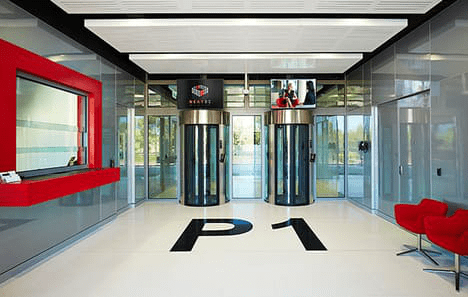Data Centre Migration: A Key Strategic Foundation for your Digital Transformation
Undertaking a data centre migration is a strategic move for organisations, often driven by the need to adapt to changing organisational requirements. This intricate process involves relocating or transitioning data centres, encompassing physical servers, storage devices, network equipment, and critical infrastructure. Whether moving to a new location or transitioning to a cloud-based platform, a well-executed data centre migration is vital for business continuity, innovation, and cost optimisation.
Understanding Data Centre Migration
A data centre migration involves the relocation of an existing data centre, either physically or virtually, to meet evolving organisational needs. These needs may stem from the organisations transformation strategies to deliver expansion, consolidation, efficiency improvement, compliance requirements, disaster recovery enhancements, or the adoption of new technologies.
Data centre migrations are complex projects that demand meticulous planning, execution, and monitoring to minimse disruptions. Inadequate planning and execution can lead to downtime, data loss, and other disruptions, impacting an organisation's financial health and reputation.
Steps to a Successful Data Centre Migration
- Define the Scope and Goals:
Clearly articulate the purpose, systems, and applications involved in the migration. Defining the scope and objectives ensures a shared understanding among project stakeholders and sets the foundation for success. - Develop a Project Plan:
Implement a comprehensive project plan that includes timelines, budgets, and resources. This plan should be flexible yet detailed, accommodating unexpected challenges and providing a clear roadmap for the migration. - Analyse and Assess the Current Environment:
Conduct a thorough analysis of the existing data centre environment. Identify risks, dependencies, and inventory hardware, software, and network infrastructure. Address security risks and compliance requirements during this assessment phase. - Plan the Target Environment:
Based on the current environment assessment, plan the target environment, considering scalability, reliability, and security. Collaborate with vendors and partners to ensure the selected infrastructure aligns with organisational requirements and budget constraints. - Conduct a Risk Assessment:
Assess potential issues that may impact the migration, including downtime, security risks, and compliance requirements. Develop a detailed plan for mitigating risks, incorporating backup and recovery procedures, disaster recovery plans, and contingency plans. - Develop a Migration Strategy and Testing Plan:
Create a migration strategy outlining data backup, application testing, network connectivity, and disaster recovery testing. Design a testing plan with a detailed schedule for testing each migration component, including data integrity, application functionality, and performance. - Communicate and Train:
Effective communication is vital. Communicate the migration plan and process to stakeholders and end-users. Provide training and support to facilitate a smooth transition, addressing concerns and ensuring a positive attitude toward the new environment. - Execute the Migration:
With the plan in place, the project team can initiate the migration. Monitor progress closely, make necessary adjustments, and follow the established contingency plans for any unexpected issues. - Verify and Validate:
After migration, verify and validate the migrated environment. Ensure data integrity, proper application functionality, and performance that meet organizational requirements. Promptly address any identified issues to stabilise the new environment. - Decommission the Old Environment:
Conclude the migration project by decommissioning the old data centre environment. Retire hardware and software no longer needed, ensuring secure data transfer to the new environment. Follow established procedures and best practices for responsible hardware and software disposal.
Challenges in Data Centre Migration
Data centre migration presents challenges that, if not addressed proactively, can jeopardise the success of the project. Key challenges include:
- Data Loss and Corruption:
Mitigate the risk of data loss and corruption through regular backups and data integrity verification during the migration process. - Application Compatibility:
Thoroughly test and validate applications to ensure compatibility with the target environment, addressing any issues before and after migration. - Network Connectivity:
Plan meticulously for network connectivity, validating IP address allocation, routing, firewall rules, and ensuring seamless connectivity before and after migration. - Resource Allocation:
Allocate sufficient resources, including CPU, memory, and storage, to meet workload demands, especially when migrating to a cloud environment, to avoid performance issues and downtime. - Security and Compliance:
Ensure the target environment meets security and compliance requirements. Implement appropriate security measures, including encryption, access controls, and monitoring. - Project Management:
Maintain a clear project plan, effective communication channels, and escalation paths. Regular updates and reporting help stay on track and address issues promptly.
Data Centre Migration Best Practices
To enhance the likelihood of a successful data centre migration, adhere to the following best practices:
- Engage with Experienced Professionals:
Collaborate with professionals experienced in data centre migrations to leverage their specialised skills and expertise for a smoother transition. - Develop a Comprehensive Project Plan:
Maintain a comprehensive project plan, regularly reviewed and updated, to provide a detailed roadmap and ensure the migration stays on track. - Perform a Risk Assessment:
Conduct a thorough risk assessment before migration to identify potential issues and challenges. It will help the team develop contingency plans and minimise the risk of downtime or data loss during the migration. - Test and Validate the Migration Plan:
Test and validate the migration plan in a non-production environment to identify and address potential issues before executing the migration. - Implement Change Management Processes:
Establish effective change management processes to inform stakeholders, minimise the risk of unexpected issues, and address resistance during the migration process. - Monitor and Communicate Throughout the Migration:
Maintain regular communication with stakeholders, ensuring ongoing monitoring of the migration process. Promptly identify and address issues and keep stakeholders informed of progress and potential impacts.
Navigating the intricacies of data centre or cloud migration demands considerable planning and execution. By adhering to best practices and addressing common challenges, organisations can successfully traverse this complexity. A well-executed migration paves the way for heightened efficiency, innovation, and sustained growth in the dynamic digital landscape.
Organisations, as they expand, often encounter limitations in their existing data solutions. Whether aiming to boost capacity, launch new applications, or access a broader range of connectivity options, the trigger for considering migration is evident.
If your organisation stands at this threshold, adapting your data centre or cloud strategy becomes imperative. The ageing infrastructure prevalent in most businesses today may fall short in efficiency and capability, lacking the power required for big data processing and storage. The IT network infrastructure should be an enabler, not a bottleneck, allowing your organisation to innovate and thrive.
The success of your migration, be it data centre or cloud, is pivotal. It empowers your organisation to enhance productivity, efficiency, and agility, facilitating breakthroughs in new territories, gaining a competitive edge, and ensuring resilience in the industry.:
Additionally, migrating your mission critical workloads to a modern platform empowers you to:
-
Scale and Grow Efficiently: Effortlessly expand your operations to meet increasing demands.
-
Support More Business Demands: Bolster your capacity to handle a greater volume of business requirements.
-
Capitalise on Market Opportunities: Seize potential market openings with agility and responsiveness.
-
Transform Your Organization into a Digital-First Enterprise: Embrace digital transformation, positioning your organization at the forefront of the digital landscape.
-
Enhance Customer Relations: Improve customer interactions and satisfaction through advanced digital capabilities.
-
Improve Your Bottom Line: Boost overall financial performance and achieve better bottom-line results.
As you embark on the critical journey of data centre or cloud migration, ensure success and amplify your organisation's capabilities by partnering with the future of data centre solutions with NEXTDC. With a proven record of excellence in design, operation, and sustainability, get in touch with NEXTDC today whether you are consolidating, or your decommissioning of data centres.
Why Choose NEXTDC for Your Data Centre Needs?
Dynamic Partner Ecosystem:
Leverage Australia's most extensive partner ecosystem with a community of 750+ partners to enable more connections with carriers, cloud providers, and IT service providers.
Hybrid Cloud Experience:
Empowering customers to leverage cloud first strategies and optimise multi-cloud deployments to scale mission critical IT infrastructure.
AI, High-Performance Computing and Edge Design:
NEXTDC is at the forefront of supporting Edge computing and High-Performance Compute (HPC) requirements, providing customised solutions to accelerate your AI journey.
100% Uptime:
The only data centre operator in the southern hemisphere with Tier IV Gold certification for Operational Sustainability, NEXTDC guarantees zero downtime for reliability and performance.
Data Centre Interconnectivity:
Secure, private, and direct access to Australia’s most connected range of global cloud providers, integrated with a nationwide network of data centre facilities.
World Class Design and Operations:
Internationally recognised for designing, constructing, and operating Australia’s market leading Tier IV facilities, certified by globally renowned Uptime Institute.
Sustainability Driven:
Demonstrating a commitment to sustainability, NEXTDC prioritizes renewable energy sources, achieving leading standards such as 5-star NABERS energy efficiency ratings and TRUE certification.
DTA Certification for Government Agencies:
NEXTDC is certified by Australia’s Digital Transformation Agency (DTA), to ensure compliant and sovereign critical infrastructure choice for government at all levels.
Industry Recognition:
NEXTDC, a listed company on the ASX 100, stands out with industry peer awards as the region's most innovative and customer focused data centre provider.
Carbon Neutral Operations:
NEXTDC's corporate operations are certified carbon neutral under the Australian Government’s Climate Active Carbon Neutral Standard.
Efficiency and Cost Management:
Engineered for outstanding energy efficiency, NEXTDC data centres deliver industry-leading benchmarks for minimising operational cost and total cost of ownership.


